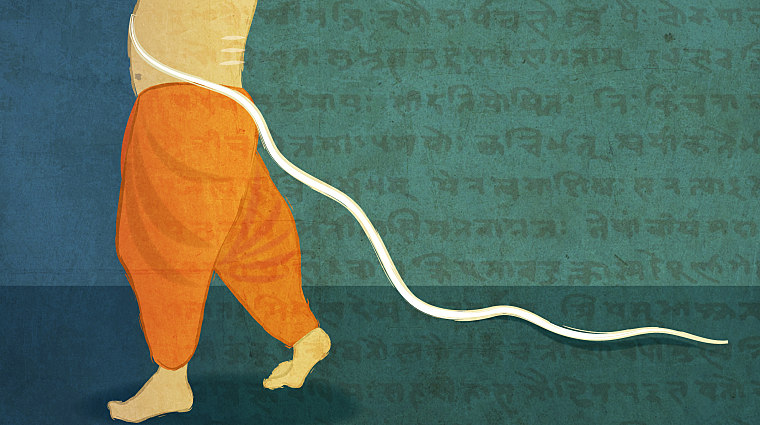
Brahmanist Assault on Buddhists
The massacres and oppression perpetrated by Brahmanist zealots out of religious hatred for Buddhists in ancient times are a matter of the historical record. Yet, for reasons best known to themselves, Brahmanists have been trying to conceal the hideous, blood-stained record of Hinduism.
The truth must be told
As the revival of Brahmanical Hinduism progressed, atrocities against Buddhists increased both in strength and in number. As Goyal [394] notes, “According to many scholars, the ostility of the Brahmanas was one of the major causes of the decline of Buddhism in India.” The hatred poured out against Buddhists in Hindu scriptures offers ample evidence of this. To quote Goyal again [394-5]:
“Yajnavalkya (I. 271-72) declares that the very sight of a Buddhist monk, even in dreams, is inauspicious. The Brhannaradiya-purana lays it down as a principal sin for a Brahmana to enter the house of a Buddhist even in times of great peril. The drama Mrchchhakatika shows that in Ujjain the Buddhist monks were despised and their sight was considered inauspicious. The Vishnupurana (XVIII 13-18) also regards the Buddha as Mayamoha who appeared in the world to delude the demons. Kumarila is said to have instigated King Sudhanvan of Ujjain to exterminate the Buddhists. … The Kerala- utpatti describes how he exterminated the Buddhists from Kerala.”
Earlier Post 7th Century Assaults on Buddhism
The Chinese traveller Yuan Chwang (Huen Tsang), who visited India in the seventh century records the oppressions of Shashanka, the king of Gauda, who was a devotee of Shiva. Yuan Chwang’s account reads, “In recent times Shashanka, the enemy and oppressor of Buddhism, cut down the Bodhi tree, destroyed its roots down to the water and burned what remained.” [Watters II p.115] He also says that Shashanka tried “to have the image (of Lord Buddha at Bodhgaya) removed and replaced by one of Shiva”. Another independent account of Shashanka’s oppression is found in the Aryamanjushrimulakalpa, which refers to Shashanka destroying “the beautiful image of Buddha” [Jayaswal, 49-50].
Another prominent seventh-century murderer of Buddhists was Sudhanvan of Ujjain, already mentioned in the quotation from Goyal above as having been supposedly instigated by Kumarila Bhatt. Madhava Acharya, in his “Sankara-digvijayam” of the fourteenth century A.D., records that Suddhanvan “issued orders to put to death all the Buddhists from Ramesvaram to the Himalayas”.
Nalanda Destroyed by Hindu Zealots
Even after the Islamic invasions of India, Brahmanist bigotry and hatred for Buddhists was not subdued. According to Sharmasvamin, a Tibetan pilgrim who visited Bihar three decades after the invasion of Bakhtiaruddin Khilji in the 12th century, the biggest library at Nalanda was destroyed by Hindu mendicants who took advantage of the chaos produced by the invasion.
He says that “they (Hindus) performed a Yajna, a fire sacrifice, and threw living embers and ashes from the sacrifice into the Buddhist temples. This produced a great conflagration which consumed Ratnabodhi, the nine-storeyed library of the Nalanda University”. [Prakash, 213].
Numerous destroyed Buddhist shrines were converted into Hindu temples after their destruction. Ahir [58] notes that “The Seat of Buddha’s Enlightenment was in the possession of a Hindu Mahant till 1952. Huen Tsang, tells us that in the seventh century A.D. not only was the Bodhi Tree at Gaya cut down by the Shaivite Shashanka, but that that worthy tried to install an image of Shiva in place of that of the Tathagata. One easy conclusion: there was not at that time an idol of Shiva at the spot; now, there is a shivalingam in the temple. The Indian Supreme court has not given its verdict in the case after 50 years!
Similarly, at Kushinara, where the Buddha had entered into Mahaparinirvana, the cremation stupa had been converted into a Hindu temple, and on top of it stood the temple of Rambhar Bhavani when Cunningham discovered the site in 1860-61. Among the shrines which still continue to be dedicated to Hindu gods, mention may be made of the Caityas of Chezrala and Ter in Andhra Pradesh which are now Shiva and Vishnu temples respectively. The temple of Madhava at Sal Kusa, opposite Gauhati in Asam, was once a sacred shrine of the Buddhists. … And the famous Jagannatha temple at Puri in Orissa was also originally a Buddhist shrine. Similarly, the Vishnupada temple at Gaya was also once a Buddhist shrine.” As Rajendralal Mitra notes in his famous work of 1878 [quoted in Ahir, 59] the feet of Buddha at Gaya was rechristened the feet of Vishnu and held as the most sacred object of worship in the new Vishnupada temple.
Hinduism’s record of violence and bigotry against the peaceful followers of Lord Buddha is unparalleled. I trust this marshalling of the available evidence for the benefit of readers who may not have had access to it will impel Brahmanists to accept and apologise for the crimes committed in the name of Hinduism.
Bibliography –
Ahir, D.C. “Buddha Gaya Through the Ages”, Bibliotheca Indo-Buddhica Series No. 134, Delhi 1994.
Goyal, S.R ., “A History of Indian Buddhism”, Meerut 1987. Jayaswal, “An imperial history of India”, Lahore 1934.
Joshi, L.M. “Studies in the Buddhistic Culture of India”, New Delhi 1967.
Marshall, John, “Taxila” Cambridge University Press 1951.
Prakash, Buddh, “Aspects of Indian History and Civilisation”, Agra 1965.
Taranatha, “History of Buddhism in India”, Indian Institute of Advanced Studies, Simla, 1977.
Vaidya, P.L. ed. “Divyavadana”, Darbhanga 1959.
Watters, T. “On Yuan Chwang’s Travels in India,” ed. by T. W. Rhys Davids and S.W. Bushel, London 1904, 1905.
– Originally published at Dalistan



+ There are no comments
Add yours